Part 2 - Painting a Four Stretched Canvas Panel Project
Work-in-Progress tips and tricks to painting across multiple stretched canvas art. Here's Part 2 - Painting a Four Stretched Canvas Panel Project follow-up
4/16/20244 min read
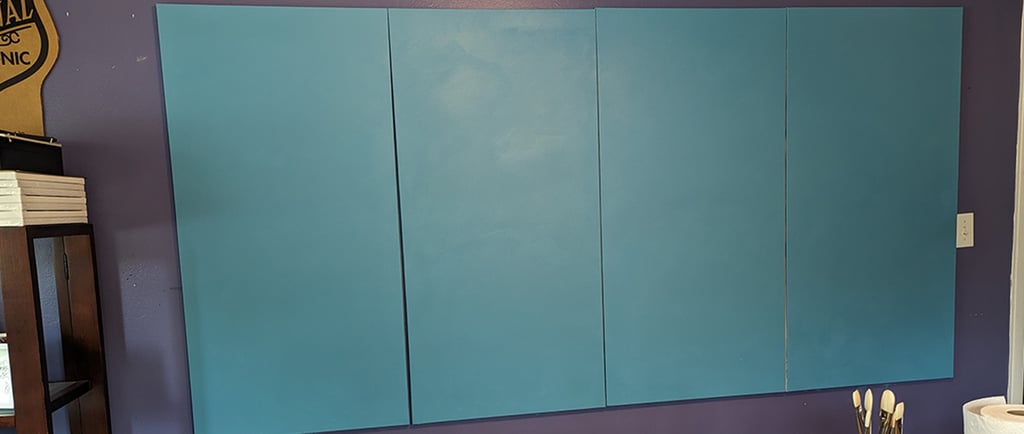

Creating a single painting across multiple stretched canvas panels can feel daunting the first time. Read Part One in this series to learn successful setup and prep for multi-panel art.
The first color is your defining color.
Choose fearlessly. Choose selfishly. If the first color you lay down doesn't inspire you, you will fight that feeling throughout the work. Lay in the color even and generous.
Vista in Blue is an art project ordered by an Illinois resident. He fights the 'winter blues'. Our goal, a work of art that can lift his spirits and remind him of a sunny wind-swept Florida day. The kind he savors when on vacation. Florida has a blue sky that isn't the blue in Illinois. The blues here in St Petersburg dance with prisms reflected by the surface of the Gulf of Mexico, the inter-coastal waters, and Tampa Bay. It's special.
From this blue all colors derived. The goal is bright, lively, colorful life in all forms. With a vista of breezy Florida sky.
Your lightest color defines the strength of your first.
First thing's first. If you want a lively painting, never use pure white, or pure black. Rather, tint them with a bit of your first color. The white you see here in the cloud formations of Vista in Blue consist of titanium white mixed with the base blue at 10%, 25%, 50%, and 75%. The same process will be applied with black when it comes time to lay in defining shadow and depths.
Your first color is only as strong as your lightest. I've washed in a horizon line loosely. Note how the first color blue, at the bottom, has faded into the background while the sky moves forward commanding all the attention. The bigger you can make that command, the better. Be fearless with your first color.
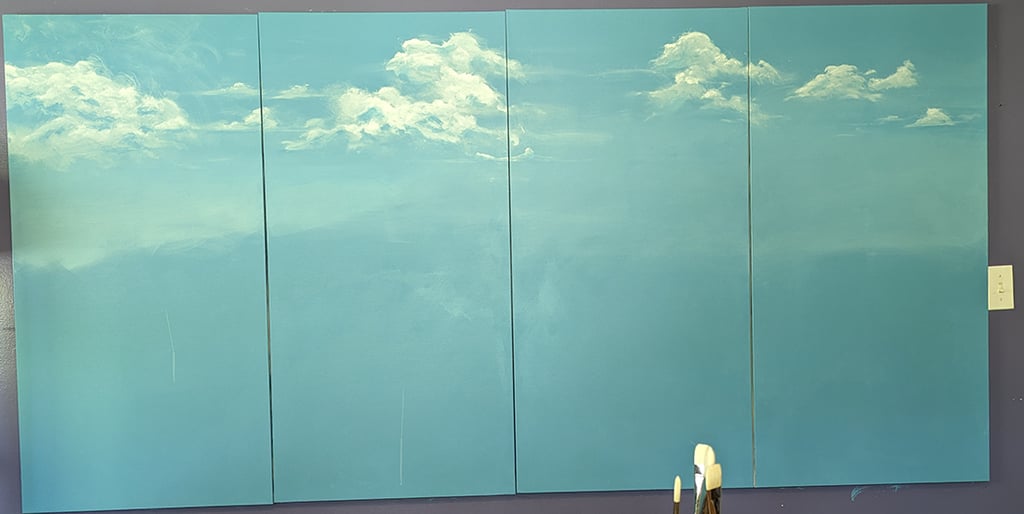

A painting is the opening paragraph of a story.
Unless we're talking about ultra-realism, a great painting leaves room for the viewer to add ideas and definitions to what you've given them. And even ultra-realism leaves a bit to the imagination. An adage in novel writing; don't tell them, show them. So goes art. A wash of color can be more powerful than pointed small brush worked details. Give your viewer room to daydream inside your world.
When I write, I leave room in a scene for the reader to imagine their version of a room or moment. I give them what they need to know for the story to move forward. And a few surprises that may or may not be necessary. A little spice. But I leave work for the reader to do as we are inspirationally traveling together. And so goes my paintings. The best paintings and novels invite the viewer or reader to create with the artist. People standing quietly in museums pondering art are creating thoughts to add to your story.
The big question. How does an artist know when they are done? If you are a practicing painter working consistently, you'll come to a point where your processes 'aren't working'. That's where you stop. Walk away. And come back a day later with fresh eyes. You'll most likely find your processes weren't working because there is no more work to be done.
If you're new to this, painting is uncomfortable the entire time. That's natural. I tell students to paint until you feel mentally tired. It may take only an hour of work. That's okay. Painting is work of mind and body. Never paint in a frustrated state. Your work won't benefit. And your joy of painting will suffer.
You are done with a section, step, or the entire thing when your ideas run out. As with Vista in Blue, the vista itself is only a place setting. It is not the main attraction. But like a circus tent, it has to be there in strength and purpose. A place to showcase life in action. Birds, insects, flowers, grasses, ducks, and one meerkat on a stump. Because my client is certain a meerkat will help his winter blues.
I cannot argue the logic.
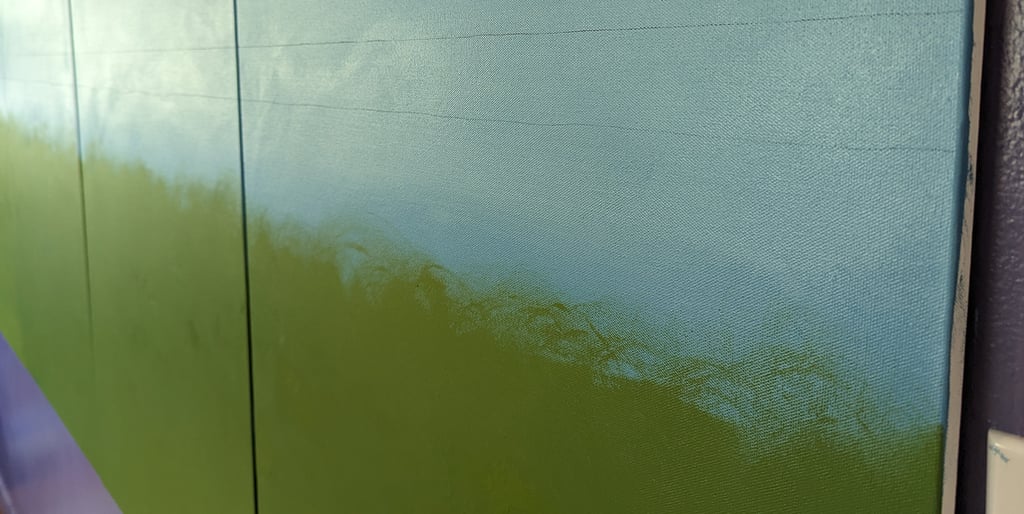

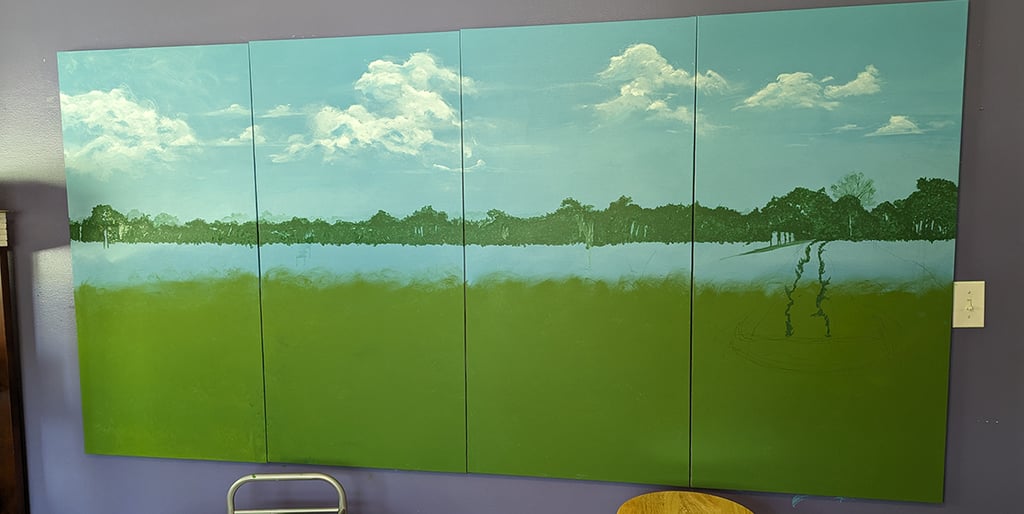



Consider why you paint, not how.
The creative arts offer ways for a human to express themselves. We are driven to express who we are, that we are here, and this is how we see our world. Art is for the joy of expression. Escape into your canvas story, let it evolve under your brush. Revel in what you accomplish. Paint the first paragraph leaving room for others to create their own endings.
Part Three - Placing Details and Characters Across a Multi-panel Painting to Create Movement, Interest and a Story publishing on my blog, soon.
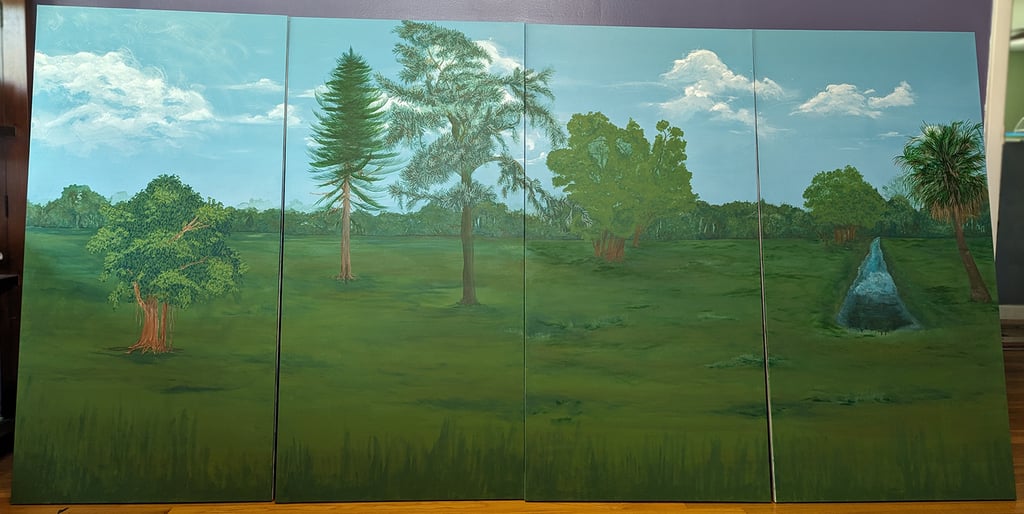

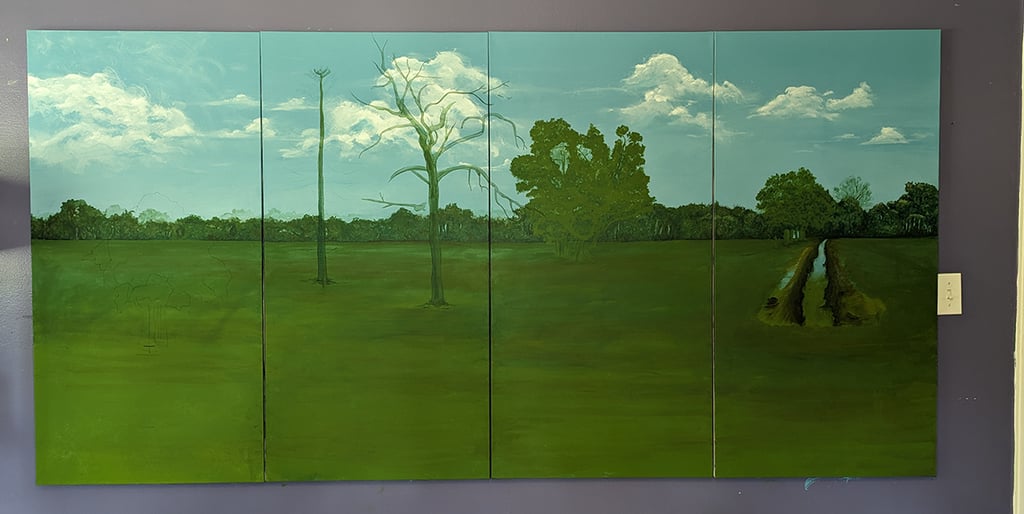

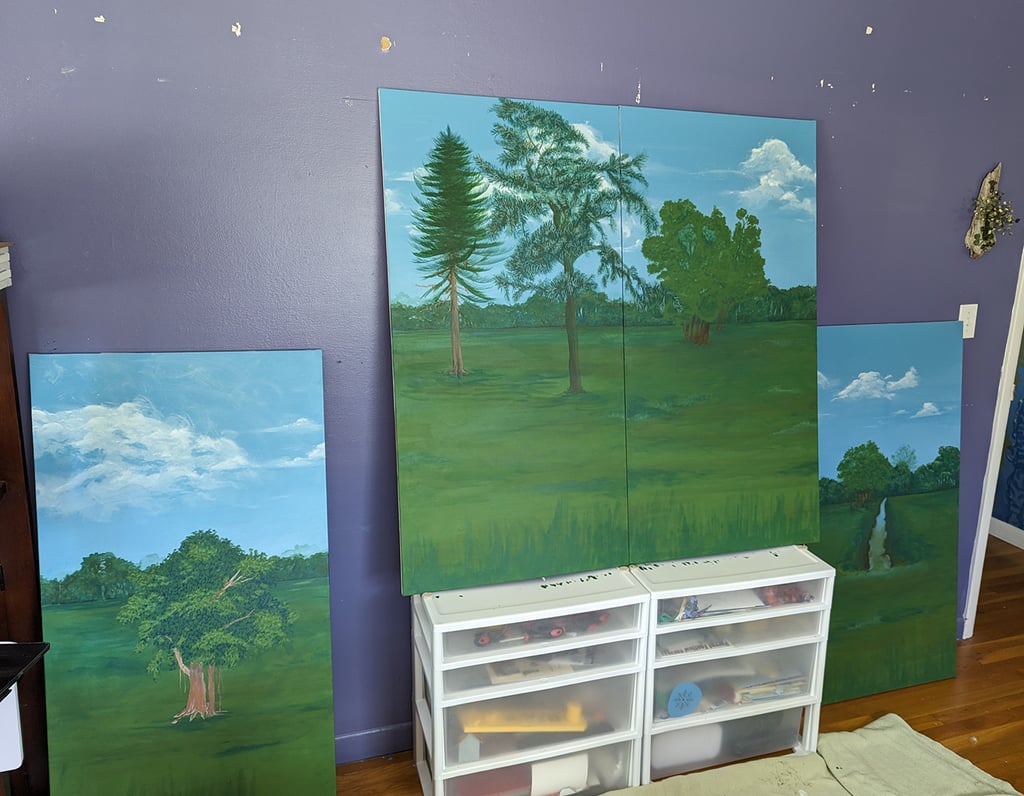

It's at this point I lay in the mid-range color for the same reason I laid in the first color. Creating that commanding element for the eye to be drawn to and through. I also draw in the horizon line. Which for the vista, is a horizon bar. As I will be relying on a line of Florida trees and brush to keep the viewer grounded.
The base color for the horizon bar color settles the viewer's eye. It also helps me feel the distance I need to create with shaded washes.
